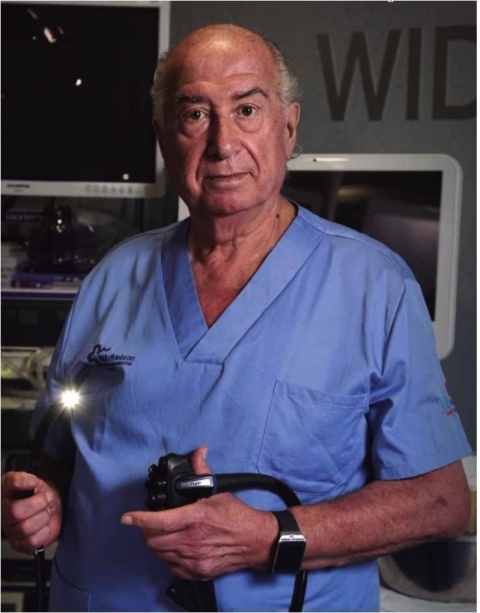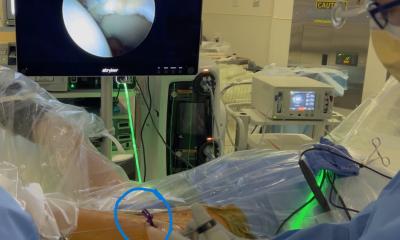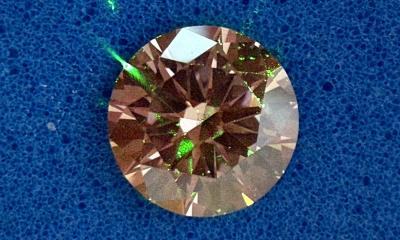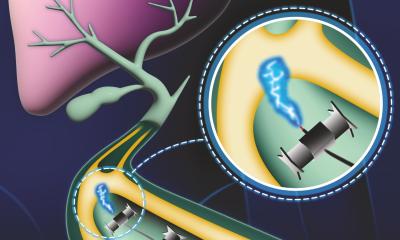Interview • Endoscopic
NOTES – An emerging trans-disciplinary treatment
Jose Ramon Armengol-Miro has directed the World Institute for Digestive Endoscopy Research (WIDER) since 2007. There, he leads the investigation of Natural Orifice Transluminal Endoscopic Surgery (NOTES). The technique was introduced to gastrointestinal endoscopy over ten years ago. Speaking with European Hospital the expert assessed its use and value today.
Interview: Mélisande Rouger

What exactly is natural orifice transluminal endoscopy surgery?
‘NOTES represents an emerging trans-disciplinary treatment based on disruptive technology. It is the paradigm between open abdominal surgery, laparoscopic surgery and surgery carried out through natural orifices. In 2000, Dr Sergey Kantsevoy and Anthony Kalloo, from Baltimore, presented their work on transgastric laparoscopy, to avoid abdominal incisions. It’s the so-called perfect cosmetic surgery with no scar, less infection risks, quick recovery without pain, quick recovery of the paralytic ileus, less adherence issues and better access in obesity indications.
‘Basically it consists of pinching the stomach, dilating an incision with a balloon, introducing the endoscope into the peritoneal cavity and closing the dilated gastric incision. Access is fundamental; it can be trans-gastric, trans-colonic or trans-vaginal. Many indications have emerged in humans since 2000: laparoscopy, appendectomy and trump ligature. In animals we are using NOTES in hysterectomy, cholecystectomy, gastrojejunostomy, splenectomy, gastric reduction, herniography and hepatic resection.
‘Advances have focused mainly on basic but essential aspects: suture, endoluminal anastomosis, transluminal drainage and complete tumour resection in gastrointestinal tube and achalasia treatment with peroral endoscopic myotomy (POEM) technique; and other applications of submucous tunnelling, such as pyloric stenosis etc. also the introduction of robotics.’
‘NOTES was introduced in June 2007, after attending the first D-NOTES course organised by Dr J Hochberger. In 1986, at Vall d’Hebron Hospital, Barcelona, a team successfully treated two patients with large pancreatic pseudo cysts by performing cystogastronomy and post dilatation of the puncture area with post-cystoscopy, with complete cleansing of the detritus inside the pseudo cysts. These cases were the foundation of NOTES in our country. Originally we had a few experimental centres that tested NOTES in animals to help develop the technique and train our teams in carrying out procedures.
‘Now the most active institutions are the Centre of Minimal Invasion Surgery Jesús Uson in Cáceres (CCMIJU), the Centre of Training in Endoscopic Surgery in Santander (CENDOS) and WIDER, where we are working on procedures for clinical practice. We also launched an international course, celebrating its 10th anniversary this year. ‘There are many more centres, but only for investigation. Many other centres perform hybrid NOTES, i.e. endoscopic surgery assisted by laparoscopy, for digestive, urology and obesity surgery.’
‘NOTES requires tight cooperation between endoscopic and laparoscopic surgeons in physiological research, new instruments development, personnel training. Cooperation trials are absolutely mandatory for the development of the technique.’
‘Benefits potentially include significant post-surgery comfort, less pain during surgery, less inflammatory response, less intraperitoneal adherence, less parietal complications, reductions in hospital stays and incapacity for work. Disadvantages are risks related to surgery, intraperitoneal infection, visceral parietal haemorrhage in the portal entry, visceral parietal suture dehiscence, adjacent visceral lesions in the entry and dissection, and difficulty in complications control. ‘
New technologies will be needed to meet objectives we set ourselves.
Jose Ramon Armengol-Miro
Why is NOTES not used as extensively as previously thought?
‘It’s true; the technique has not delivered everything we hoped for. The crisis clearly had an impact on investment from cutting edge industry. NOTES is now being used to develop treatment of digestive tube tumours, sub mucosa dissection, subserosal dissection and thickness resection with complete endoscopic suture. In echo endoscopy combined with ERCP, it is also used in biliopancreatic pathology and in anastomosis between viscera, stomach liver, bile ducts and intestine.
We still face many challenges in pneumoperitoneal gastric overture, orientation and navigation, characteristics of the endoscope, sterility, tissue manipulation, triangulation, haemostasis, gastric closure, quality visceral sutures and ergonomic work platforms.’
How might NOTES develop and what may change?
‘We must continue to evaluate NOTES development and viability in animal experiments. New technologies will be needed to meet objectives we set ourselves. NOTES has already led to great advances in conventional endoscopic surgery and fibre, tube endoluminal endoscopy.
‘This new paradigm will change our conception of conventional endoscopy teaching, in diagnosis and therapy. Specialist training will be multidisciplinary and require in-depth knowledge of gastroenterology and laparoscopic surgery, NOTES will change medico-surgical specialist training in digestive endoscopy. ‘Its evolution will require true innovation and cooperation between endoscopic and laparoscopic surgeons through experimental work and physiological research, and the development of new instruments, accessories, procedures and cooperation trials.
Profile:
Jose Ramon Armengol Miro heads the gastrointestinal surgery department at Hospital Vall d’Hebron and the gastrointestinal endoscopy department at Quiron Clinic, in Barcelona. He is also associate professor at the medical faculty of Autónoma University, in Barcelona. He is founder and president of the Catalan society of medico-surgical digestive endoscopy. Additionally, Armengol-Miro is vice-president of the World Organisation of Digestive Endoscopy.
13.11.2016











